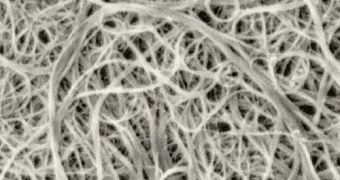The Hayward, California-based Porifera company is currently working on a new method of using carbon nanotubes for capturing and storing carbon dioxide produced at an industrial scale by smokestacks. This is a goal towards which many research groups around the world are working. Developing a cheap carbon-capture and -storage (CCS) technology could see a large number of fossil fuel-powered, electrical plants switching to the new standard. These facilities are currently coming under full-scale attacks by environmental activists and regulators alike.
The massive amounts of greenhouse gases (GHG) that these power plants produce contribute a large percentage to the total amount of GHG and, especially, carbon dioxide (CO2) that is being emitted in the planet's atmosphere each year. Having them retrofitted with capable CCS technologies could see these emissions being drastically reduced. Methods of doing so exist now as well, but they come with a very high price tag, and many facilities cannot afford them. The costs of installing CCS devices in some cases exceed the costs of building a new power plant.
Porifera will receive more than $1 million from the newly founded Advanced-Research Projects Agency for Energy, ARPA-E. The company argues that its technology, which relies on the use of carbon nanotube membranes inside smokestacks, could see between one and three billion tons of carbon dioxide being prevented from reaching the atmosphere every year. The method will also be about $10 billion per year cheaper than existing CCS technologies, experts at Porifera say. The company's Chief Technology Officer, Olgica Bakajin, estimates that the first working prototype is less than one year away.
Bakajin previously led a team of experts from the US Department of Energy's (DOE) Lawrence Livermore National Laboratory (LLNL) in studying the properties of carbon nanotube membranes. The group discovered that gases passed through the nanotubes at speeds of up to 100 times faster than in other types of membranes, used in existing CCS technologies. This means that CNT membranes would require a lot less energy to operate than their counterparts, which would make them cheaper and more affordable to power plants around the world. Details of the original research appear in a 2006 issue of the top journal Science, Technology Review reports.

 14 DAY TRIAL //
14 DAY TRIAL //